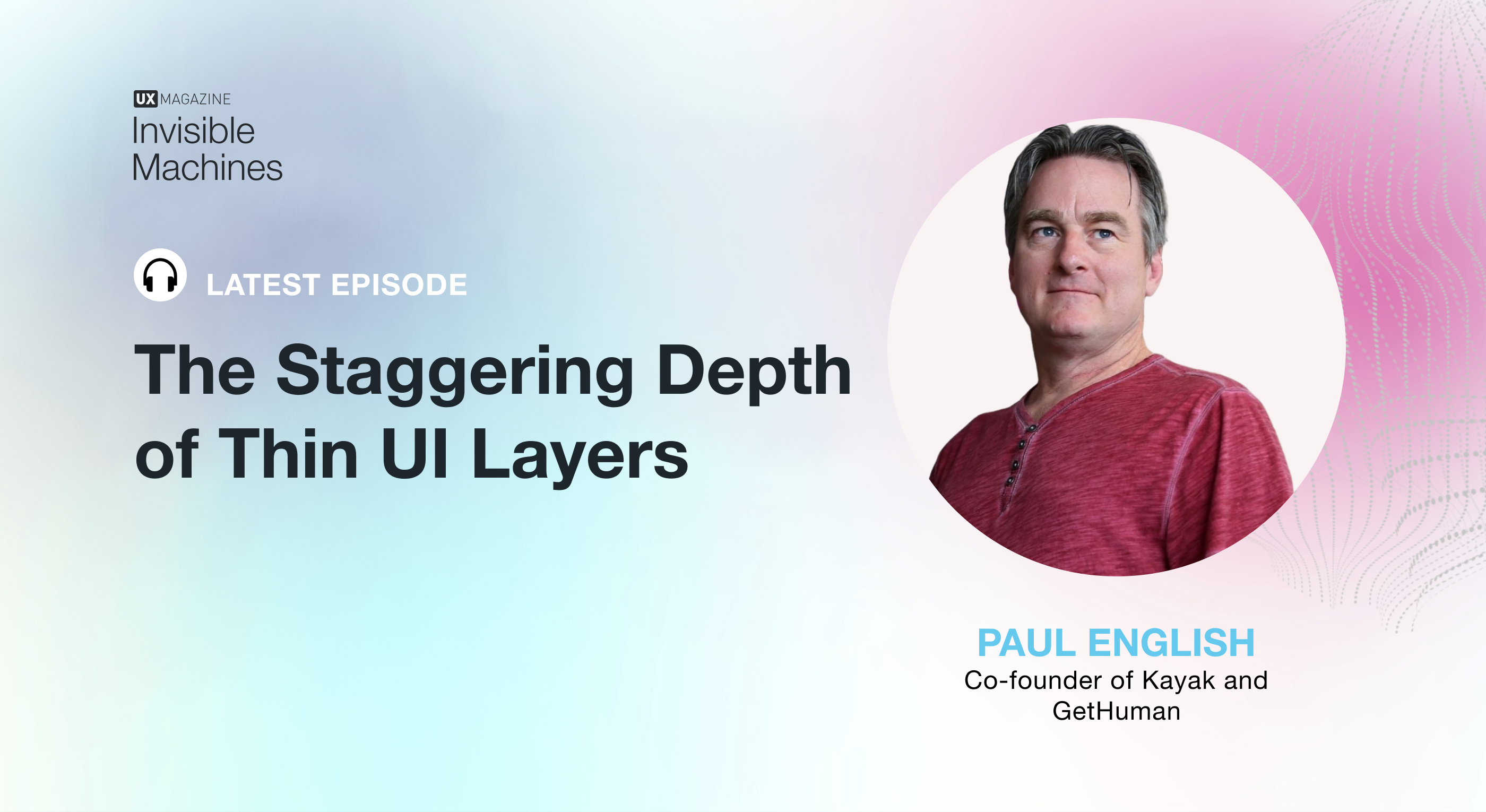Season three of the Invisible Machines podcast kicks off with special guest Paul English. The Boston-based entrepreneur and activist is co-founder of Kayak and GetHuman, and English has found success with Boston Venture Studio, Deets, and Lola, which recently sold to CapitolOne. Robb and Josh invite Paul for an exploration of the ways that conversational AI can act as a think UI layer, obscuring all of the messy technology in our lives.
In the early days of Kayak, the service was derided by engineers and developers as nothing more than a thin UI layer that sat atop other companies’ technology. Paul had the last laugh, as his creation, a website that curated airline tickets in a more user-friendly manner, is emblematic of a concept that is shaping our future with technology. Along with this notion, Paul joins hosts Robb Wilson and Josh Tyson for an exploration of the ways machines talking to other machines will change our experience of being human. They also discuss the ways that machines can deliver constructive data to users without making them feel judged, how universities can teach students to make themselves better in their careers using generative AI, why consumers should be rated in the same way that businesses are, and how the Buddhist idea of embracing impermanence to ease suffering applies readily to companies racing to adopt generative AI
Paul’s dogged commitment to creating better experiences on both sides of the customer equation is increasingly salient in this new technological era and we’re excited to kick off season three with this frank and fascinating conversation with Paul English.
You can choose your favorite podcast streaming platform here.








